Ladakh, the land of high passes, knows how to celebrate. And, by experiencing their festivals, you’ll realize they do so in major style! Now, the best way to immerse yourself in the history and culture of a place is to partake in festivals and fairs.
Also, once you’re in the Land of the Lamas, you need to be prepared to party– people here are happy, fun, and always down to celebrate. From Polo and archery to dances and history, when it comes to festivities – Ladakh has you covered.
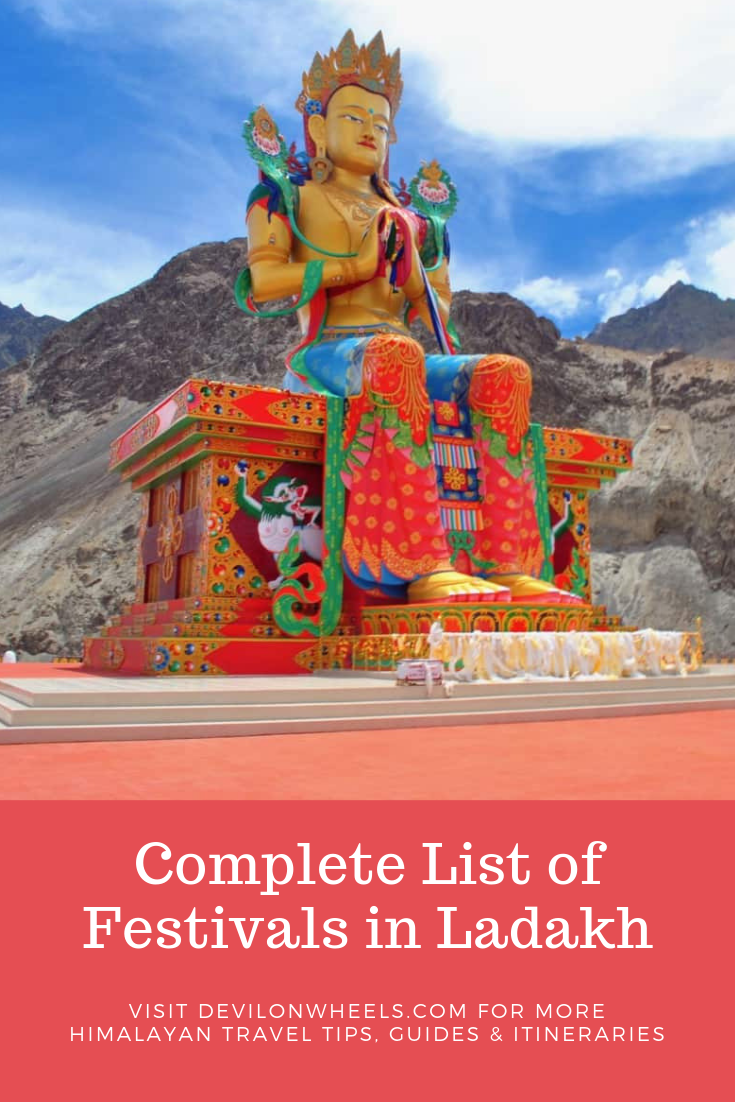
While we have already covered an extensive list of festivals in the Spiti Valley region, read on for an extensive list of festivals celebrated in Ladakh and their significance!
Let's quickly dive into the details:
Festivals in Ladakh – Upcoming Dates & Places
This table provides you the Ladakh festival dates in the year 2019 and 2020. You can check the below dates calendar schedule of festivals in Ladakh and plan your upcoming Ladakh trip to include these festivities too.
Ladakh Festival Dates 2020 2021
| Festival Name | When | Duration | Where | Upcoming Dates |
| Dosmochey Festival | February | 2 days | Liker, Leh Palace, Diskit Monastery | 21 – 22 February 2020 |
| Yargon Tungshak | February | 2 days | Nubra (Yarma) | 27 – 28 February 2020 |
| Stok Guru Tsechu Festival | February/March | 2 days | Spituk & Stok Monasteries | 3 – 4 March 2020 |
| Matho Nagrang Festival | February/March | 2 days | Matho Monastery | 8 – 9 March 2020 |
| Saka Dawa Festival | May/ June | 1 day | All over Ladakh | 17 June 2019 5 June 2020 |
| Sindhu Darshan Festival | June | 3 days | Shay Manla | 12 – 14 June 2019 12 – 14 June 2020 |
| Hemis Festival | June/July | 3 days | Hemis Monastery | 11 – 12 July 2019 30 June– 1 July 2020 |
| Yuru Kabgyat Festival | July | 2 days | Lamayuru Monastery | 29 – 30 July 2019 18 – 19 July 2020 |
| Ladakh Polo Festival | July | 6 days | Shagaran Chushot, Leh | 11 – 17 July 2019 11 – 17 July 2020 |
| Phyang Tsedup Festival | July/ August | 2 days | Phyang Monastery | 30 – 31 July 2019 18 – 19 July 2020 |
| Takthok Tsechu | July/ August | 3 days | Takthok Monastery | 10 – 11 Aug 2019 29 – 30 July 2020 |
| Ladakh Harvest Festival | September | 15 days | Leh | 22 – 25 September 2019 |
| Chemday Wangchok Festival | November | 2 days | Chemrey Monastery | 24 – 25 November 2019 13 – 14 November 2020 |
| Galdan Namchot Festival | December | 1 day | All over Ladakh | 21 December 2019 |
| Losar | December | 15 days | All over Ladakh | 27 December 2019 15 December 2019 |
| Spituk Gustor | January | 2 days | Spituk Monastery | 22 – 23 January 2020 |
| Karsha Gustor | July | 2 days | Karsha Monastery | 30 – 31 July 2019 18 – 19 July 2019 |
| Stongday Gustor | June/July | 2 days | Zanskar | 20 – 21 July 2019 8 – 9 July 2020 |
| Diskit Gustor | October | 2 days | Diskit Monastery | 26 – 27 October 2019 14 – 15 October 2020 |
| Thiksey Gustor | November | 2 days | Thiksey Monastery | 15 – 16 November 2019 3 – 4 November 2020 |
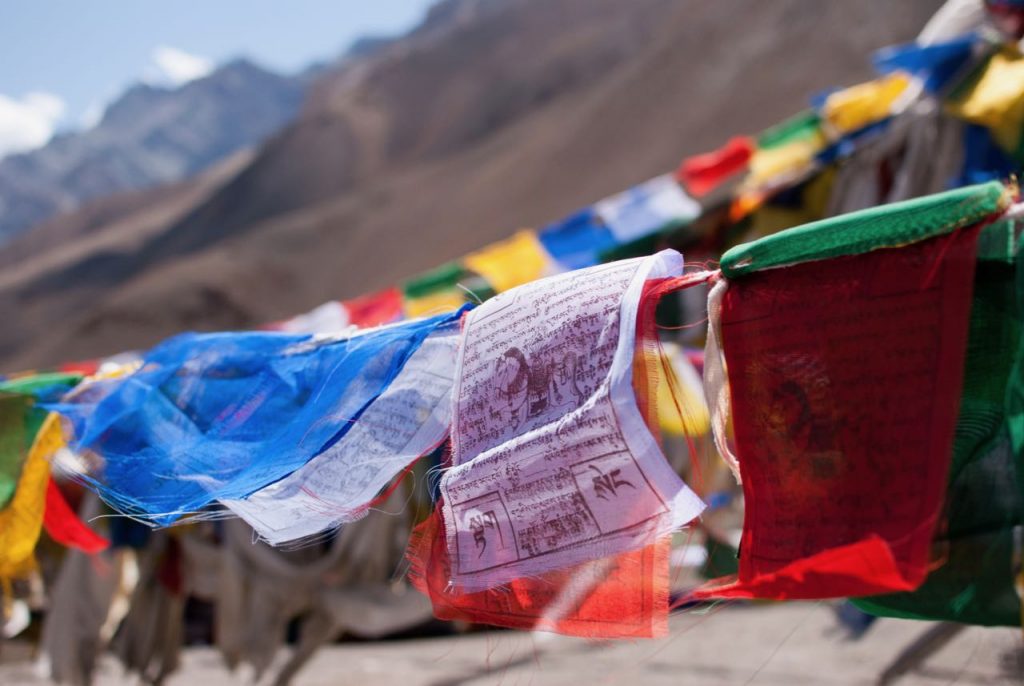
1. Dosmochey Festival
Dosmochey is observed in Lower Ladakh’s Liker, Leh Palace and the Diskit Monastery in Nubra. This festival is celebrated in the month of February (or 28th and 29th day of the twelfth month Tibetan calendar). This festival marks the last celebration associated with a particular year. Literally translating to the “Festival of Scapegoat”, Dosmochey is a popular Ladakhi prayer festival.
Started by the rulers of Ladakh in the 13th Century, the kingdom of King Lhachen Gongdup celebrated the Dosmochey festival for the first time. Leh Palace is the most popular location for this celebration, as this is where the celebrations initially began. The venue for the two-day festival in the courtyard of the palace. And, of course, the monks and Lamas perform the chamm dance, which is rotated between various monasteries yearly.
On the 2nd day, the offerings from various monasteries, followers, and visitors are taken out and burnt in a procession while the locals whistle to ward away the evil spirits.
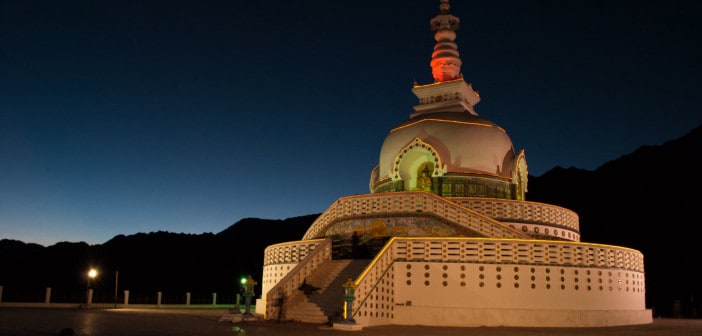
2. Yargon Tungshak Festival
Nubra Valley celebrates Yargon Tungshak, a true blue winter festival, in the month of February. As Nubra is a high altitude desert, winter months are harsh. Still, performers dress up in their best attires and wear the most elaborate masks to put up some enthralling performances.
Also, the music is strictly local, and the low-level syllables accompanied by strange melodies will have you hooked. Some stunning dishes like Gurgur Cha, Skyu and Thupka are served. And lastly, the monastery holds a grand prayer meet, wherein the devotees chant Sanskrit and Tibetan mantras.
3. Stok Guru Tsechu Festival
Third, on the list of Ladakh Festivals is the Stok Guru Tsechu festival.
Falling in February commences on a ninth day after the Tibetan New Year, Stok Guru Tsechu marks the 2-day celebration where monks of Spituk and Stok monasteries take part in festivities, performing mask dances. The biggest differentiator of this festival from other places of observance is that common men and villagers participate integrally in the festival.
Two common men from the nearby villages are assigned by the monks to be recipients of the spirit of the deities each year. The men are known as oracles, once the monks designate the locals. Both Oracles visit the monasteries, wherein they pass on integral messages from the Gods.
Key attractions include the different traditions followed here from other similar festivals, especially of commoners’ involvement in the festivities. Also, another major attraction during the festival is the masked dances – as is symbolic of most Buddhist festivals.
4. Matho Nagrang Festival
Matho Monastery near Leh celebrated the Matho Nagrang Festival, immediately after the Stok Guru Festival. The two-day Matho Nagrang festival falls on the 15th day of the first month of the Tibetan calendar. The lone Gompa of this monastery fervently represents the Sakya School of Tibetan Buddhism.
As is customary to Buddhism, monks wear colorful brocade and silk robes during the festival and perform masked dances. These masks are the depiction of Gods and Goddesses in Buddhism.
Similar to Stok Guru, there are also two oracles in attendance for the event. However, the oracles need to complete a month of meditation in the wilderness before the event. With extreme weather conditions in the winter months, this clearly shows the dedication and belief in the faith that people have!
The oracles provide words of wisdom and an insight into the future, presenting future predictions. Locals and villagers alike flock to the Monastery to understand ways of keeping evil at bay.
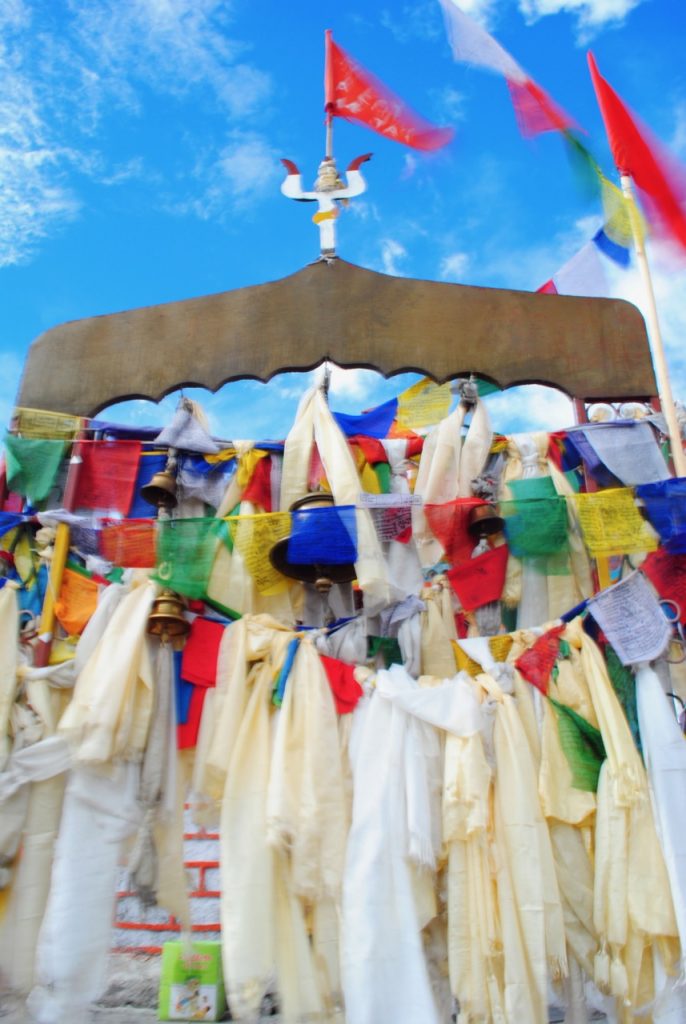
5. Saka Dawa Festival
Next on the list of festivals in Ladakh is Saka Dawa Festival.
Saka translates to the “name of the closest star to earth”, which is clearly visible during the festival. Celebrated on the full moon of the 4th month of the Tibetan Calendar, Saka Dawa symbolizes the birth of Sakyamuni (Gautam Buddha) as when he attained enlightenment and subsequently Parinirvana.
On this holiest of days as per Tibetan Buddhism, the monks across Ladakh and other regions change the Tarboche flag pole, which lies at the South of the mountain, Kailash Kora. It is if the changed flag stays erect then it is very auspicious for the Tibetans. The most revered day for Buddhists, this is the day that marks the birth of their faith and lifting of everyone’s life into spirituality.
Also, during this period, the region revered through the chanting of “Om Mani Padme Hum” . Also, usually, people refrain from killing and eating animals during the day. These ideologies for a part of the eight Mahayana precepts. If you’re in the region during this time, experiencing the reverence of Buddha and learning of His ideologies will make you more appreciative in life.
6. Sindhu Darshan Festival
Held on the first full moon day in June, Sindhu Darshan Ladakh Festival was first observed in October 1997 and has continued every season since. Truly representing unity and national pride, all symbolically represented by way of the name itself – Sindhu pays due respect to the Indus River. As the illustration of the birth of civilization in the region, the Indus River flows through communities. It nourishes all within reach in this difficult terrain.
However, over the years, this festival of Ladakh has morphed into an embrace of Indian diversity and heritage. While also paying respects to the protectors of our realm – our soldiers! The symbolic salute to our nation’s unsung heroes is marked with celebration, and artists of different castes, regions, and religions perform their traditional dances. The venue for the festival is 8 KMs from Leh, right on the banks of Indus river at Shay Manla.
You can, of course, check our travel guide on Indus – Zanskar Confluence.
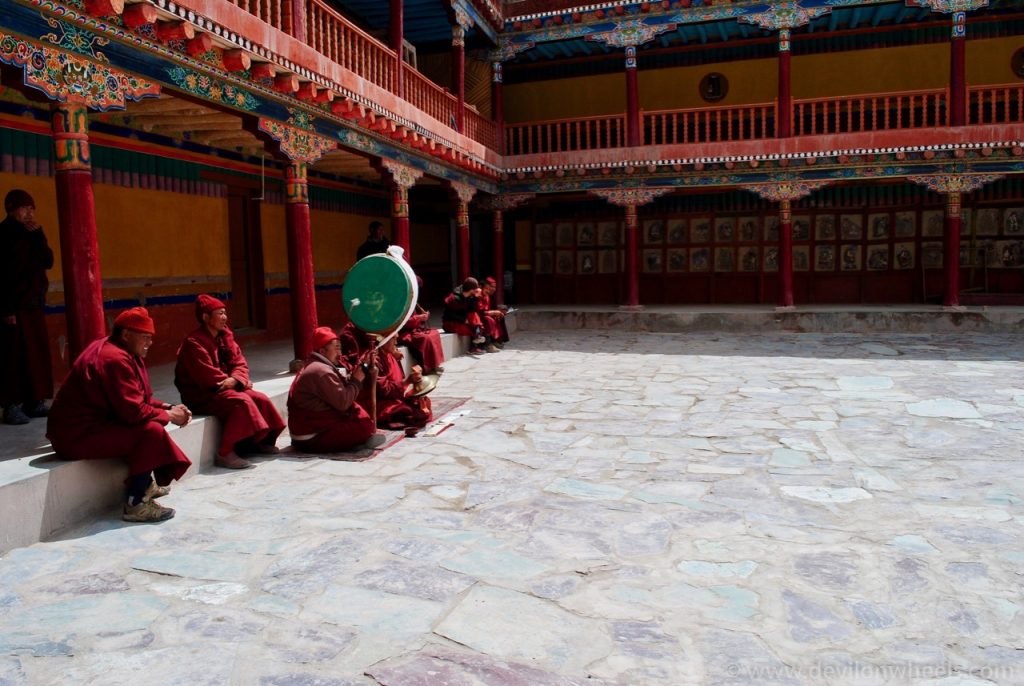
7. Hemis Festival
Commemorating the birth of Guru Padmasambhava, the founder of Tantric Buddhism in Tibet. Hemis is one of the most important festivals of the Ladakhi region and is celebrated in the largest monastery of Ladakh – Hemis. This festival in Ladakh is celebrated annually on the 10th day of the Tse-Chu, Lunar month of the Tibetan Calendar. Its popularity cannot be overshadowed by many festivals around the world and promises vibrancy and positivity throughout the three days.
Colorful clothing of monks and lamas is complemented by the beautiful masked dances, synonymous with celebrations in the region. Of course, the sacred theatrical representation of victory of good over evil is a tale to tell and will leave you mesmerized. What’s unique about the dance here is that it depicts the tale of Guru Padmasambhava’s life and his missions. The entire monastery is laden up most beautifully to showcase the spirit of festivity.
Traditions of the Hemis Festival
During the Hemis festival each year, a 4-storeyed thangka of Guru Padmasambhava is slung in the courtyard along with other precious thangkas. The festival also has a tonne of representation of the handicrafts and talents of the region.
Tradition dictates that monks and Lamas should wear long gowns, elaborate masks, and headgear. Every mask holds a special significance and usually depicts forms of Gods and Goddesses. Villagers and natives dress up to the nines for Hemis Festival and gather around in the courtyard of the monastery.
Head Lama or ‘Rinpoche’ presides over the event and is responsible for ensuring the spirituality of the festival. Consumption of Chhaang – the local beer, is acceptable. The festivities end by breaking up of Storma and dispersing it in all directions. This custom indicates the cleansing of the soul after death. While celebrations happen annually, the monkey year as per the Tibetan calendar, which falls every 12 years, is a sight to behold!
Needless to say, the Hemis Festival is one of the most popular festivals in Ladakh.
8. Yuru Kabgyat Festival
Lamayuru Monastery, situated 125 KMs from Leh, comes alive full of color during the two-day celebration of Yuru Kabgyat. Also, as is symbolic in the Buddhist culture, all celebrations are accompanied by the traditional mask dances, folk music as well as other rituals to mark the riddance of evil while also offering prayers for peace.
Significance of Yuru Kabgyat Festival
Given the keen significance of the Yuru Kabgyat in the Buddhist culture, celebrations are full of zeal and enthusiasm, with devotees attending from across the world. Heavy representation of folks and Lamas from Tibet, Japan, Korea, and China helps in presenting a unique image of amalgamation of Buddhist cultures.
Religiously, Yuru Kabgyat is devoted to the Lord of Death, Yama, and the Second Buddha / Lord of Wealth, Padmasambhava. The theatrical dance performed during the festival perfectly represents both Gods.
Since Lamas from various countries are present during the festivities, the clothes and the clashes of colors amp up the playfulness of the event. And, of course, any Buddhist festival is incomplete without the Cham dance, wherein the monks dance in a circular motion, adorning gorgeous masks. The dance moves complement the sounds of cymbals, drums, and long pipes. At the end of the festival, sacrificial offerings are made and some sacred rituals are performed.
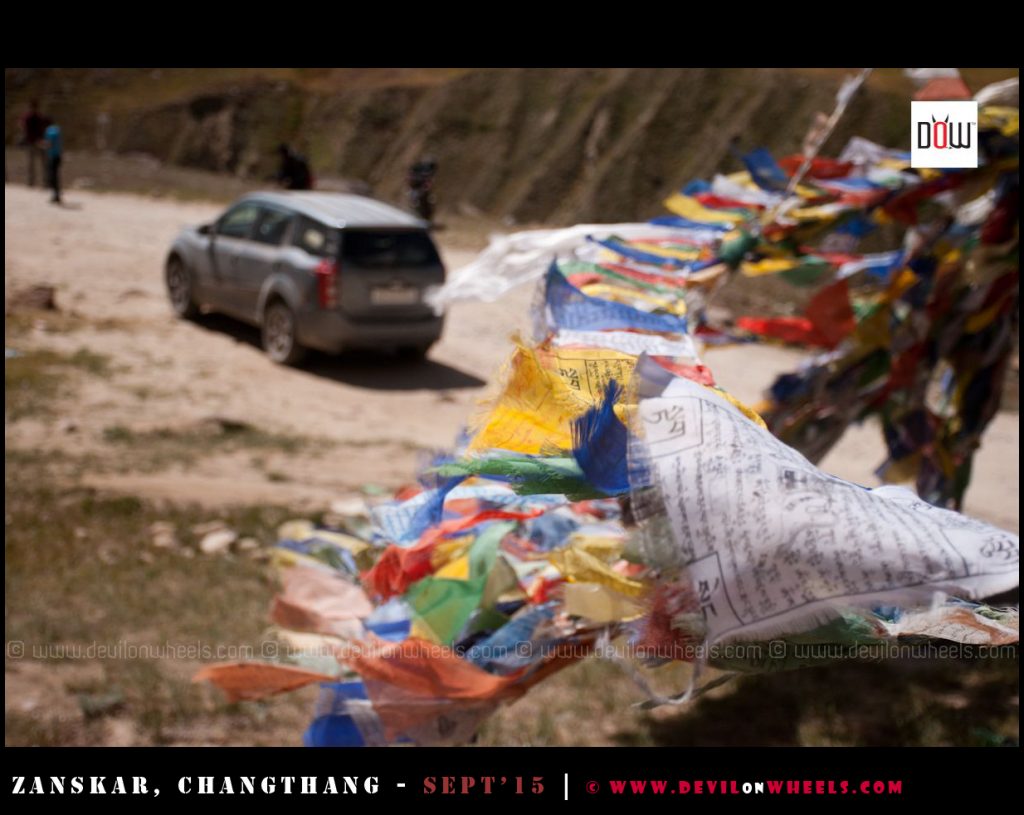
9. Ladakh Polo Festival
The Ladakh Polo Festival is one of the most unique and traditional experiences one can have when in Ladakh. With lots of music, tonnes of food and bags of celebrations, the Polo festival will definitely give you ample opportunities to enjoy this heritage game.
The game was introduced to Ladakh in 15th century CE when a princess from Baltistan, Singge Namgyal, visited the region. Gaining popularity through decades and centuries that followed, Polo became an essential part of the Ladakhi DNA. So much so, that it even shows up on other festive occasions. Of course, these include the Buddhist and Muslim new years – Losar and Nowruz, respectively.
Events at the Polo Festival
What’s interesting to observe is the difference in Ladakhi adaptation of Polo from other regions of the world. Given the geographical topography, the game is played on highly arid land – making it far more demanding. Another interesting twist is the accompaniment of traditional folk music with each goal scored.
While, of course, Polo is the star attraction, there is a lot of activities that are ongoing during the week of festivities. Since this is primarily a display of the traditions, you will get to experience a tonne – including archery, folk dances, and music.
A favorite amongst locals and also a favorite of mine is the local theatrical drama of Abi-Apo. One can even participate in a lot of games, or if you’re anything like me – eat to your heart’s desire. The momos, Thupka, and anything Tibetan are going to leave you drooling – so do indulge!
Lastly, no festival is ever complete without some shopping involved, and what is delightful about any Ladakhi festival is the handicrafts on display. Pattu, baskets, Thangka Paintings, and of course, pashmina shawls are all available for your purchase!
So, do not miss this festival in Ladakh if you are around.
10. Phyang Tsedup Festival
The festival is celebrated in Phyang Monastery in July/ August or the 2nd and 3rd day of the 6th month as per the Tibetan Calendar. Phyang Monastery is 19 KMs from Leh and dedicated to the founder of the Dringumpa Monastic Dynasty, Jigten Gombo.
During the festival, a giant thangka of Skyoba Giksten Gonbo is placed in the courtyard. People also worship the thangka of Jigten Gombo during this festival in Ladakh. Phyand Tsedup festival celebrates the triumph of good over evil. However, dance remains the center of attraction. Monks wearing vibrant silk costumes perform Chham and worship their deity.
This festival is especially applauded for its enthusiasm and energy. Visitors observe an abundance in messages of Lord Buddha displayed across the carnival along with various exhibitions of Buddhist artifacts. Smiling Lamas in vibrant attire, portraying different characters of the dance is surely a sight you won’t soon forget.
On the last day, some ritual offerings are burnt and the Storma is destroyed to conclude the procession.
11. Tak – Thok Tse-Chu
Tak-Thok festival in Ladakh is a hit amongst the locals and villagers from far-flung lands visit the caved Gompa at Takthok Monastery. The celebrations begin on the 10th day of the Lunar Tibetan Calendar and the locals & Lamas celebrate by way of Chham dances. While this dance form is usually known as the “death dance,” it is, however, very meditative and usually carries a message and teaching for those observing the dance!
Because of the spiritual significance of the festival, it is believed that people who witness the festival has been bestowed with teachings and attain protection from the evils of the world. Also, given the warm place in locals’ hearts for this festival, you’ll get to see the Ladakhis dressed to the nines for these days.
12. Ladakh Harvest Festival
The fortnight of celebration that is the Harvest Festival in Ladakh is one of merriment and delight. The entire region of Ladakh is in a joyous mood, and the celebrations go on with much enthusiasm. Being a challenging terrain, with access cut off from the rest of the world for many portions of Ladakh, the harvest season, in particular, is an occasion to treasure.
Thus, the harvest festival witnesses’ rich cultural displays including, folk performances, mask dances, wedding ceremonies, archery, theatre, music, polo capping up with the main highlight – carnival parade through Leh’s streets with everyone participating, climaxing at the Polo Grounds.
The extravaganza is an appreciation of agriculture in the livelihood of Ladakhi folk, and there is a due representation of the plethora of cultures of the region and celebrates the blend of traditions. The finest display of color, talent, art, hard work and skill will leave you awe-struck.
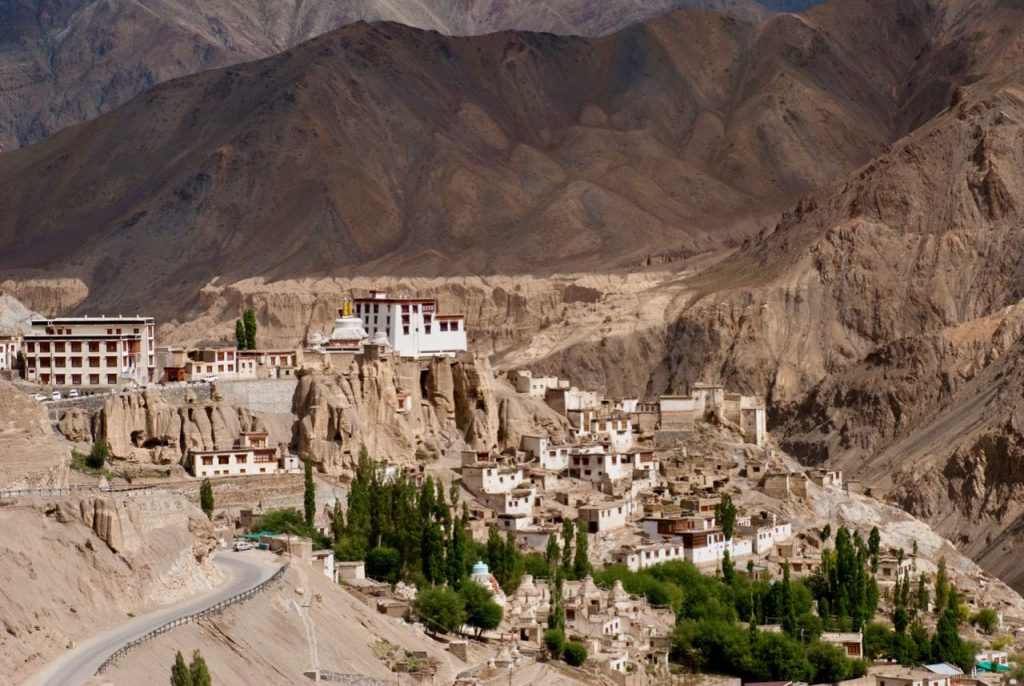
13. Chemday Wangchok Festival
The 28th and 29th days of the ninth month of the Tibetan calendar mark the beginning of Chemday Wangchuck. This festival is celebrated in 370-year-old Chemrey Monastery, established by Buddhist Lama Taktsang Repa, situated 44 km from Leh. Tantamount to the Buddhist culture, this festival marks the victory of good over evil.
You can visit Chemrey Monastery on your trip to Pangong Tso from Leh.
The festival is especially respected by the Drukpa sect of Tibetan Buddhists settled in Ladakh. True devotees of the festival, Drukpa folk are known to engross themselves in the festivities. For this particular celebration, the monks of Chemrey Monastery meditate for a week before the beginning of the festivities to gain peace.
At the beginning of the merriment, these monks put up a soulful rendition of the masked dance – Chham, which continues for the two days. On the second day, a Mandal Puja is conducted on the premises of the monastery.
14. Galdan Namchot Festival
The Galdan Namchot Festival has serious significance in Tibetan Buddhism as it celebrates the birthday and Buddhahood of the Tibetan saint-scholar, Tsongkhapa. As it was under Tsongkhapa’s guidance that Gelukpa School was founded. The School forms the primary path for Tibetan Buddhism during the 14th Century.
During this festival, all the monasteries, public and residential buildings are lit up to honor Tsongkhapa. Since the Ladakhi culture is intertwined with Tibetan influences, this festival marks the beginning of New Year celebrations, which continue to the Dosmoche festival.
Of course, food is an important part of the celebrations, and a lot of amazing Tibetan dishes are prepared and shared with loved ones. To mark the occasion, people present ‘Khatak’ to each other, a ceremonial scarf.
15. Losar Festival in Ladakh
Ladakh Losar Festival – The biggest festivities in the harshest of climates and during the most unfriendly months is a sight to see. Losar marks the new year in the Tibetan culture, and locals celebrate with delight in Ladakh. This festival falls after the Galdan Namchot and is celebrated as per the Tibetan calendar.
Predating even the Buddhist timelines, Losar has its roots in the winter incense-burning custom of the Bon religion. It was during the reign of Tibetan King, Pude Gungyal in the 7th Century that this festival became an integral part of the Tibetan/Buddhist culture.
Though earlier the dates of both Losar and Galdan Namchot were same, in the first half of the 17th Century, King Jamyang Namgyal was planning an expedition against the Baltistan forces in the winter season, he thus decided that the festival would be celebrated later and this has since become a tradition.
Timeline of Losar Festival in Ladakh
Celebrated for 15 days at a stretch – gods, ancestors as well as animals are well fed. One the first day, folks enjoy changkol (Tibetan Beer). This event is followed by the King’s Losar and other holy celebrations throughout the period. At home, the walls of the kitchen are also dotted so that it can bring in prosperity in the New Year.
Procession of fire, Metho, is organized, during which slogans are chanted to chase away evil spirits. In some of the villages, locals make snow figures of older men and women to mark good luck. People of all age groups take part in Losar celebrations with full zeal.
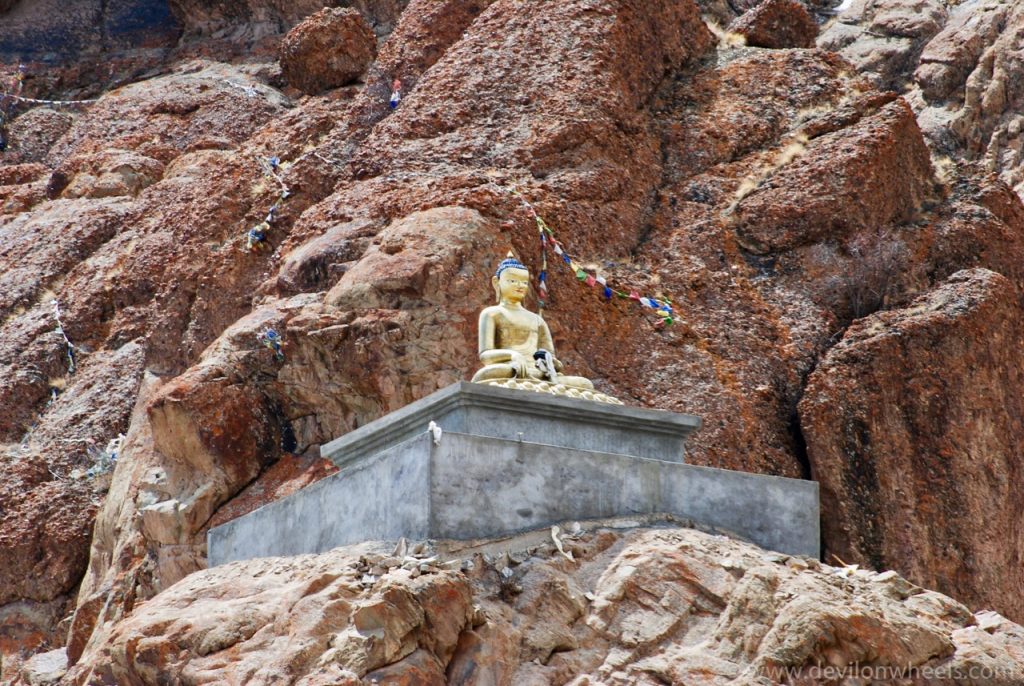
Gustors – Sacrifices
Gustor, literally meaning sacrifice on the 29th Day, is celebrated to mark the victory of good over evil. These two-day celebrations represent progressive Buddhism and are observed over the year in various monasteries in Leh Ladakh and Zanskar Valley.
The three most famous Gustors include the once celebrated at Thiksey, Spituk and Karsha gompas during different months of the year.
Of course, dance forms an integral part of the celebrations, with the dancers wearing masks that symbolize Gods and Goddesses as Protectors and Guardians. At the end of the two-day festivities, the climatic close includes the symbolic killing of evils by way of burning effigy of evils.
Let’s look at these festivals of Ladakh in various monasteries across the region.
Spituk Gustor
Spituk Gustor Festival is an annual winter celebration in Ladakh and is the perfect recipe for dealing with harsh winters. The traditional ritual followed in monasteries of the reformist Geluk-pa order of Tibetan Buddhism, Gustor in Spituk Monastery, has been celebrated since the 11th Century. Spituk Gustor symbolizes the victory of good over evil.
The main purpose of the festival is to pray for world peace, happiness, and welfare of all beings. Prayers start seven days preceding the festival, but dances are performed only during the festival. Similar to other Gustors, effigies of evil forms are burnt, and Chham forms an integral part of the Spituk Gustor.
More drama and theatre than just dance form, Chham represents guardian divinities (Dharmapalas) of Buddhist pantheon and supporter divinities of the Geluk-pa order. The dance is conveyed by the harmonious melodies of longhorns, cymbals, conch shells, bells, and many other instruments.
Monks of the world representing various monasteries of Stok, Sankar, Saboo and Spituk assemble here during the festival. The unique aspect of this particular Gustor is the uncovering of the protective amulet treasured in Spituk for the festival where pilgrims take blessings.
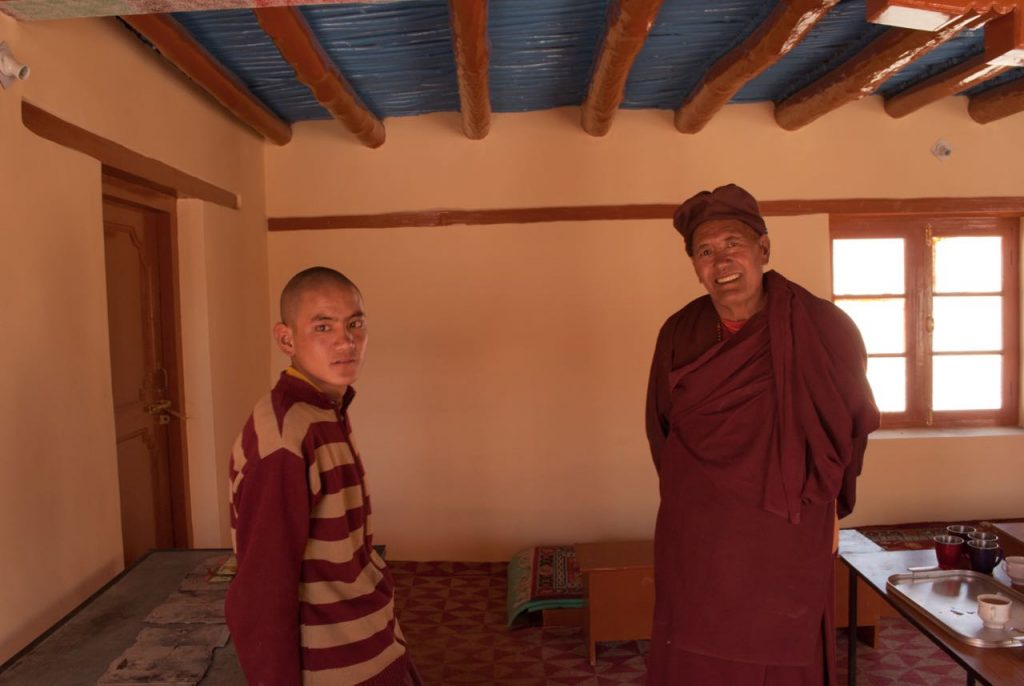
Karsha Gustor
The largest Karsha Gustor celebration occurs at the Zanskar Karsha Monastery, 12 km from the capital of Zanskar, Padum. The festival begins with the preparation of sacrificial cake, Storma – indicating an evil force.
The end of the festival is marked when a monk cuts the cake in two, ending the reign of evil. Karsha is one of the largest monasteries, with over 100 resident Lamas, and the celebrations truly represent enthusiasm.
Karsha Monastery is known as the Yellow – Hat monastery. However, a Dharmapala (black-hat dance) is performed. Chham, of course, makes a cameo. The main purpose of observing Gustor is to seek protection for Buddhism and Buddhists.
Stongday Gustor
Held as per the Tibetan Calendar, Stongday Gustor usually falls in the month of June or July. Thanks to the pristine weather and the peak tourist season, this festival, in particular, is visited by a lot of visitors. Of course, the famous Chham dance is performed and along with the burning of effigies to mark the end of evil.
Diskit Gustor
The oldest and largest monastery of the Nubra Valley, Diskit Monastery was founded by Changzem Tserab Zangpo, a disciple of Tsong-Kha-Pa. Diskit Monastery has insane views, overlooking the sleepy town of Diskit along the Shyok River (River of Death). The Gompa of this Monastery is associated with the Yellow Hat (Gelugpa) sect of Tibetan Buddhism.
Marking good over evil, the Gustor in Diskit monastery livens up the region with the burning effigies of evil, chaam dance and a lot of pomp and show! The music greatly complements the views, and you’ll soon be lost in a trance thanks to the peace and tranquillity.
Thiksey Gustor
Similar to the Karsha Gustor, Thiksey Gustor is also a 2-day event which has similar beginnings by the creation of the sacrificial cake (known here as the Torma) and later cutting off the cake to mark the end and then distributing it in the worshippers (Argham’ or Klling). The unique aspect of the Thiksey Gustor is the re-enactment of the assassination of the traitor King Lang Darma of Tibet by a Buddhist monk during the mid-9th Century.
Did you can check our travel guide on Stakna Monastery?
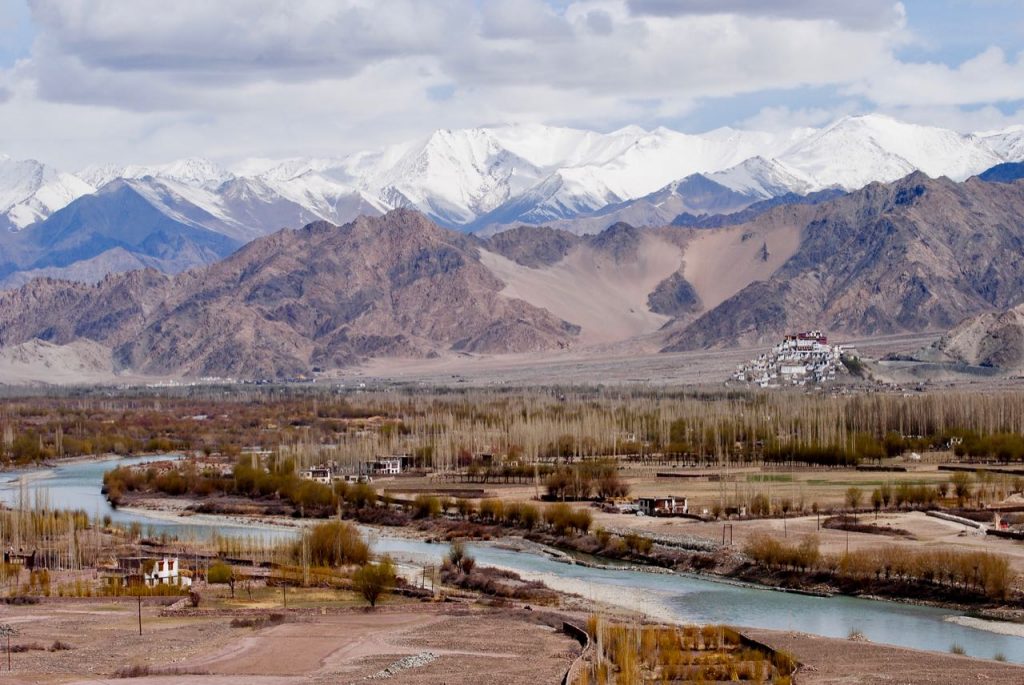
Conclusion
I am sure you’d agree that the Land of High Passes, Ladakh, celebrates life in style. When you live in such harsh conditions, you start appreciating what is truly important. And, for Buddhists, it is the precedence of good over evil.
Have a travel question?? You can subscribe to my YouTube channel and leave a comment to ask your travel questions about traveling to the Himalayas.
Culture is truly depicted through the myriad of festivities and is the best way to assimilate into the culture of the region. I hope this comprehensive list of festivals in Ladakh has taken you through the wonderland of Ladakh.
If you’re looking to plan your travels and need some guidance, do comment below. Also, we have already prepared the routes for you for a beginner level introduction & understanding!
Happy holidays and celebrations!


![Fairs & Festivals in Ladakh [Month by Month Guide] Lord Buddha 106 Feet Statue](https://discoverwithdheeraj.com/wp-content/uploads/2019/01/Diskit-Monastery-Nubra-Valley-6-1024x686.jpg)

![How to prepare for cold weather motorcycle ride in Ladakh or Spiti Valley? [13 Important Tips]](https://discoverwithdheeraj.com/yt_vid_thumbs/ladakh/83.png)

